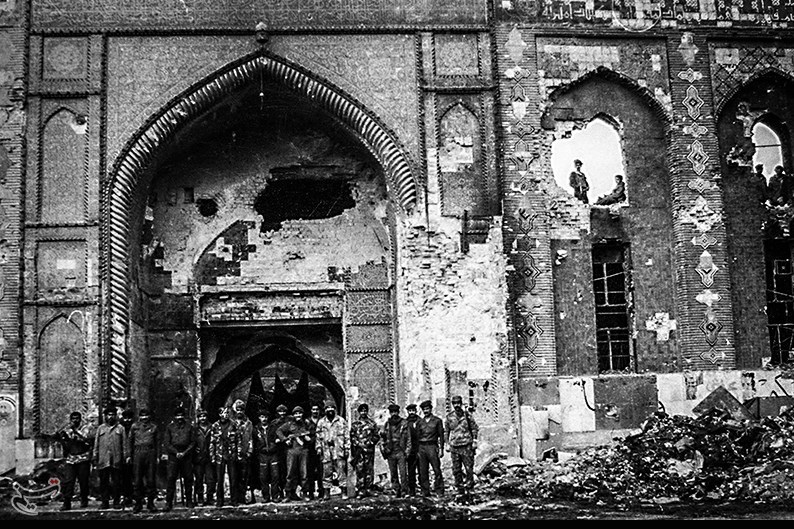In March 1991, following the uprising of the Iraqi people on the ruling Iraqi government, the government forces attacked the holy city of Karbala and completely destroyed the city centre (especially the area linking the two holy shrines and buildings around it).
The most important Islamic monuments were levelled to the ground and thus the city has lost many of its valuable architectural heritage which was its pride and glory such as the traditional souks, hussainiyat, institutions, religious schools, khans, kaiseriyats (shopping arcades) and the beautiful traditional houses.
Thus, the area between the two holy shrines was converted to a huge empty yard, 160 metres wide by 300 metres length, and surrounded by other demolished buildings.
In the beginning of 1997, Karbala municipality paved the open area between the two holy shrines with concrete, and planted it with date palm trees.
Planning permission without prior planning and architectural study of the site, was given to the owners of the lands around this area to build it with hotels and other types of accommodation for pilgrim. This has resulted in the setting of buildings which are not consistent with the building style of the two holy shrines and the architectural fabric of the old city.
Source:
- Holy Shrines of Karbala: By Raouf Mohamed Ali Al-Ansari
[P 109-112].

